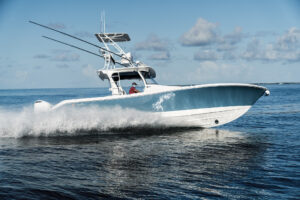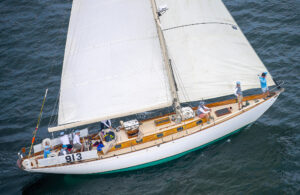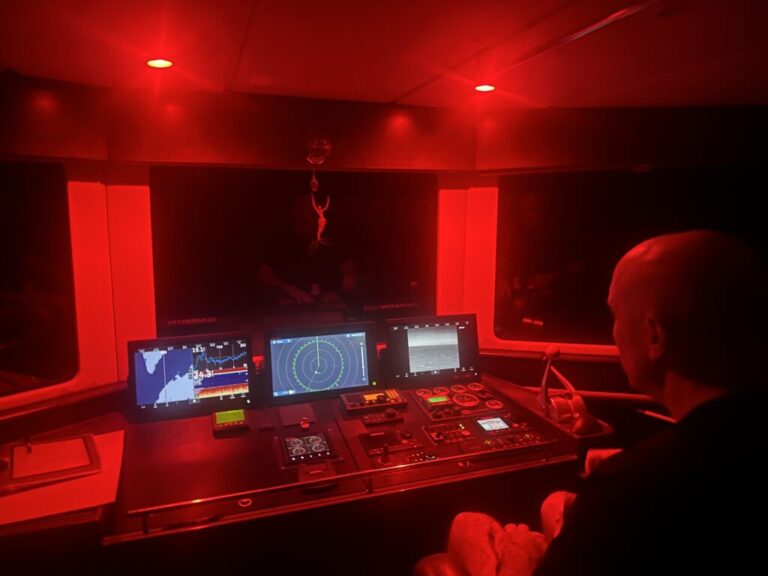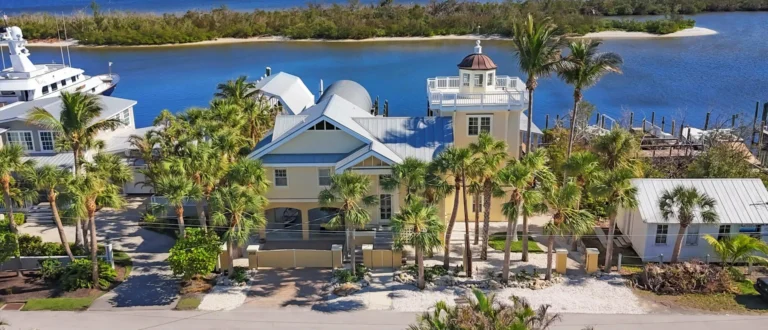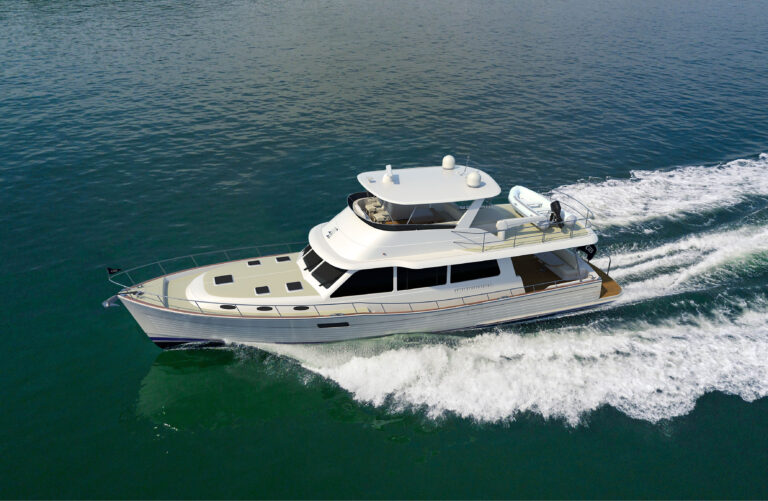Peter Poanessa, an East Coast native living 100 miles from the ocean in Keene, N.H., chose a traditional West Coast fishing design for his first boatbuilding project.
Poanessa, 52, who spent a decade as a commercial fisherman, for years dreamed of building his own boat.

He recalls his fishing days with nostalgia and gravitated to the designs of Sam Devlin – a pioneer of the stitch-and-glue wooden-boat building method known for his seaworthy designs with workboat lines.
“I liked the classic design of Devlin’s boats, a real traditional workboat style,” Poanessa says. “Having been an old fisherman, that’s what appealed to me, then the building method.”
Devlin’s designs were a natural fit for a man who spent 10 years aboard commercial boats off Alaska – a career he happened upon after hitchhiking across the country at the age of 19. He quit fishing when it came time to settle down with a family.
Poanessa, however, planned to build a boat as his retirement project and bought plans for a 22-foot Devlin design. Poanessa regularly pored over the plans, pulling out the papers and dreaming of the day he would begin building his boat. “It was almost as good as having the boat, at least to hold me over,” he says.
He wanted a trailerable boat with an enclosed helm, full galley, head and sleeping quarters, though he wasn’t sure how to fit all of that into a 22-footer – a question he would later answer after working alongside Devlin in a weeklong class (more on that later).

As a full-time family man and the owner of Keene Signworx – which produces custom carved and dimensional signs – it was another year before Poanessa found the time to get started. The jolt that helped jump-start the project came in the form of an end: the death of a close friend, a reminder of how short life is, he says.
“It was sudden, unexpected. It made me rethink that this would be a retirement project,” he says.
Poanessa wasted no more time. In summer 2003 he and his brother built a shed less than 100 feet from his store. A short time later he learned Devlin would be in Maine for a weeklong class on stitch-and-glue construction, where marine plywood panels are “stitched” together with wire sutures, epoxied and fiberglassed, producing a one-piece boat (see accompanying story). Poanessa jumped at the chance to learn the method from Devlin himself.
“It made the process easier for a non-boatbuilder,” he says. “The finished boat tends to be lighter, stiffer and stronger.”

Devlin and Poanessa became friendly during the class, and Poanessa outlined the laundry list of features he wanted in his boat. Considering the range of requirements, Devlin advised stepping up to a 25-foot design, and Poanessa went with plans for the 25-foot Surf Scoter.
After a week with Devlin, the creative floodgates were opened. Poanessa bought 30 gallons of epoxy and 94 8-foot sheets of BS 1088 okoume plywood, including 40 half-inch sheets (at the time $95 each) and another 40 sheets of 3/4-inch ($120). For cold-molding the bottom, he used quarter-inch and 3/16-inch plywood. For the interior of the main cabin, he purchased four sheets of okoume with a 19mm mahogany veneer at about $120 a sheet.
“I don’t know the total cost of the plywood because I did end up buying a few more sheets here and there, but I can tell you the total project cost about $70,000,” he says.
Poanessa wanted to make some changes to the design, however, and regularly consulted with Devlin about his ideas. Though some designers view modifications with horror, Devlin believes boatbuilding can be a dynamic process in which builders add their own spice to the stew. “What they come up with is thought-provoking and humbles me,” Devlin says.
During the process of building the hull, Poanessa aligned and braced all of the bulkheads, then assembled the entire hull in one weekend. Before building the transom, however, Poanessa did some figuring. By scarfing together three-and-a-half sheets of plywood, he could stretch the design a foot while maximizing the expensive okoume. After consulting Devlin, he decided to go with the 26-footer.

The top of the pilothouse follows the sheer line, and Poanessa modified the pilothouse windows so they are plumb instead of the 7-degree slant the plans show. Poanessa also shoehorned a galley table that converts to a berth to port in the pilothouse, an idea that came about when he and his wife, Mary, chartered a Devlin Black Crown 29 in 2004, halfway through the project.
He saw that the side decks running up to the bow on the Black Crown 29 were quite wide, so he decided to add 4 inches of width to the cabin in his design by narrowing the port and starboard side decks by 2 inches. That created enough room for the table. “It makes the boat so much more livable,” he says.
Poanessa’s background in sign-making, as well as some wooden boat repair from his days on commercial fishing boats, home-building, furniture, cabinet work and welding, kept the learning curve manageable. The mechanical elements were the most difficult part of the project, particularly installing the Volvo Penta D3-160 diesel sterndrive with just his wife for help.
“Like everything with building a boat, it was all confusing and mystical at first,” says Poanessa. “But standing knee-deep in 100 pages worth of manual and wires – I just took it one step at a time, followed the directions, got help from the wife, and got it done.”
Poanessa wanted a fuel-efficient engine with no corrosion issues – horsepower was a lesser concern. He liked the carbon fiber outdrives in Volvo Penta’s Ocean Series, which allow for painting with regular bottom paint. He chose the 160-hp engine because, at the time, it was the smallest power plant Volvo would mate to that drive, he says. Ultimately, he says, it ended up being more fuel efficient than the smaller Volvo engines he’d looked at, and it gives the boat a top end of 26 knots.
When Poanessa did run into problems, he took two different approaches to troubleshooting: the old-fashioned route – talking about solutions with his buddies over cold beer – and the 21st-century approach, posting questions on builders’ Internet forums. Between the two approaches, he inevitably found workable solutions.

In summer 2006, after 2,200 hours of labor, Poanessa completed the boat of his dreams: Alsek, the 26-foot Surf Scoter.
If the process was smooth, the result was smoother. He reports having no major issues with the boat. “If a problem were ever to arise, I have peace of mind knowing every nook and cranny of the inner workings is of my own creation,” he says.
Poanessa keeps Alsek on a mooring in East Greenwich, R.I., roughly two-and-a-half hours from his home in Keene. He and Mary try to make it to the boat every weekend during the season – last year they managed 45 nights on board – and are occasionally joined by their children Emily, 24, Evan, 22 and Erin, 20.
Selling Alsek is not even in the picture. As happens with any labor of love, the boat has become a permanent member of the family.
See related articles:
– Sam Devlin- designer, builder, tinkerer
– The ins and outs of stitch-and-glue
This article originally appeared in the May 2010 issue.


